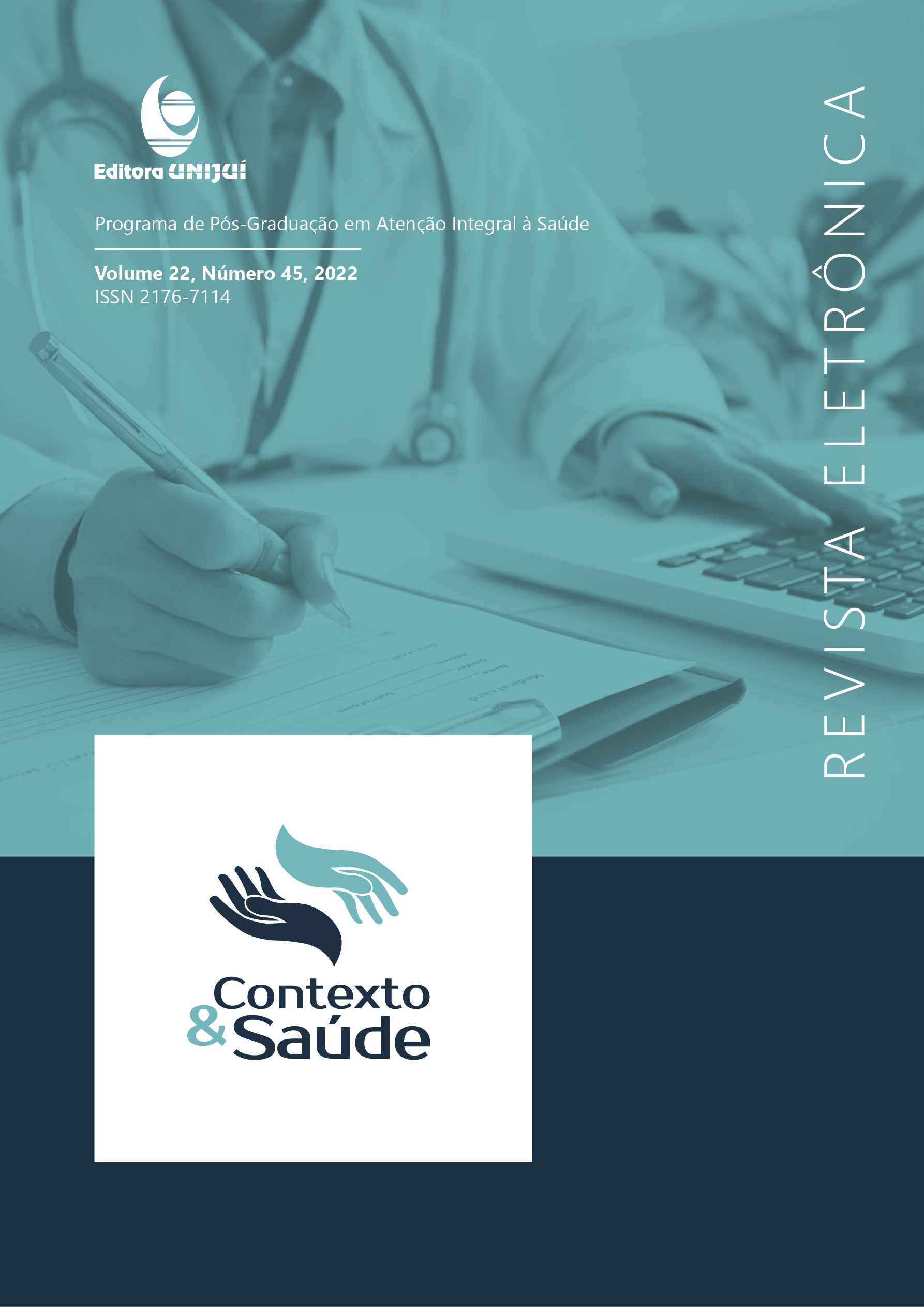Paradigma de dupla tarefa no contexto de quedas de idosos: uma revisão integrativa
DOI:
https://doi.org/10.21527/2176-7114.2022.45.11160Palavras-chave:
Envelhecimento, Marcha, Equilíbrio postural, Quedas por acidenteResumo
Com o envelhecimento, o desempenho cognitivo, a marcha e o equilíbrio são afetados. Diante disso, idosos apresentam dificuldade para executar simultaneamente duas ou mais tarefas em situações cotidianas da vida. Objetivo: Sumarizar estudos que investigaram a relação entre marcha, equilíbrio e quedas de idosos utilizando o paradigma de dupla tarefa. Metodologia: Revisão integrativa da literatura que incluiu estudos publicados entre os anos os anos de 2008 e 2021, realizada nas bases eletrônicas de dados PubMed, CINAHL e Web of Science com os descritores MeSH: marcha OU caminhada OU equilíbrio OU postura OU idade (60 anos ou mais) OU quedas OU quedas acidentais OU dupla tarefa OU dupla tarefa OU paradigma de dupla tarefa OU tarefa cognitiva. Resultados: 1.280 estudos foram encontrados e 34 selecionados. Verificou-se que o paradigma de dupla tarefa é uma estratégia útil
à identificação prévia de idosos caidores, além de que exercícios de dupla tarefa podem beneficiar o desempenho da marcha e do equilíbrio, reduzindo o risco de quedas. Conclusão: Paradigmas de dupla tarefa são medidas eficazes à identificação de distúrbios da marcha e do equilíbrio. No contexto de queda de idosos, o emprego dessa metodologia apresenta vantagens em relação aos exercícios fundamentados na tarefa única. Estudos futuros devem buscar homogeneidade entre as medidas de avaliação e buscar um melhor detalhamento dos exercícios empregados.
Downloads
Publicado
Como Citar
Edição
Seção
Licença

Este trabalho está licenciado sob uma licença Creative Commons Attribution 4.0 International License.
Ao publicar na Revista Contexto & Saúde, os autores concordam com os seguintes termos:
Os trabalhos seguem a licença Creative Commons Atribuição 4.0 Internacional (CC BY 4.0), que permite:
Compartilhar — copiar e redistribuir o material em qualquer meio ou formato;
Adaptar — remixar, transformar e criar a partir do material para qualquer fim, inclusive comercial.
Essas permissões são irrevogáveis, desde que respeitados os seguintes termos:
Atribuição — os autores devem ser devidamente creditados, com link para a licença e indicação de eventuais alterações realizadas.
Sem restrições adicionais — não podem ser aplicadas condições legais ou tecnológicas que restrinjam o uso permitido pela licença.
Avisos:
A licença não se aplica a elementos em domínio público ou cobertos por exceções legais.
A licença não garante todos os direitos necessários para usos específicos (ex.: direitos de imagem, privacidade ou morais).
A revista não se responsabiliza pelas opiniões expressas nos artigos, que são de exclusiva responsabilidade dos autores. O Editor, com o apoio do Comitê Editorial, reserva-se o direito de sugerir ou solicitar modificações quando necessário.
Somente serão aceitos artigos científicos originais, com resultados de pesquisas de interesse que não tenham sido publicados nem submetidos simultaneamente a outro periódico com o mesmo objetivo.
A menção a marcas comerciais ou produtos específicos destina-se apenas à identificação, sem qualquer vínculo promocional por parte dos autores ou da revista.
Contrato de Licença (para artigos publicados a partir de setembro/2025): Os autores mantém os direitos autorais sobre seu artigo, e concedem à Revista Contexto & Saúde o direito de primeira publicação.

